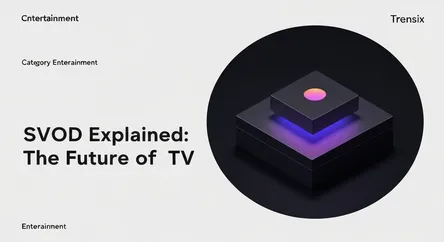Entertainment
SVOD Explained: The Future of TV

Explore SVOD (Subscription Video on Demand), the model behind Netflix and Disney+ that has revolutionized how we watch our favorite TV shows.
What is it?
SVOD, or Subscription Video on Demand, is a business model where users pay a recurring monthly or annual fee for unlimited access to a vast library of video content. Unlike traditional television, SVOD services allow viewers to watch what they want, when they want, without commercials. This model is the backbone of major streaming platforms like Netflix, Disney+, Amazon Prime Video, and HBO Max. These services offer extensive catalogs of licensed movies and TV shows alongside their own exclusive, original programming, making them a dominant force in modern entertainment consumption.
Why is it trending?
SVOD's popularity stems from its unparalleled convenience and control. It has fueled the phenomenon of "cord-cutting," where consumers cancel traditional cable subscriptions in favor of more flexible and often cheaper streaming options. The trend is also driven by the production of high-quality original content, or "Originals," which attract and retain subscribers. The ability to binge-watch entire seasons of a TV show at once has fundamentally changed viewing habits, creating massive cultural conversations around new releases. The ongoing "streaming wars" between major media companies continuously fuels innovation and content acquisition, keeping SVOD at the forefront of entertainment news.
How does it affect people?
SVOD has fundamentally altered how people consume media. It has shifted audiences from linear, appointment-based viewing to an on-demand, personalized experience. This has popularized terms like "binge-watching" and created a culture of immediate gratification for entertainment. While it offers incredible choice and access to global content, it has also led to "subscription fatigue," where consumers feel overwhelmed by the number of services needed to access all their desired shows. This fragmentation of content across different platforms is a growing challenge for viewers navigating the modern digital landscape.